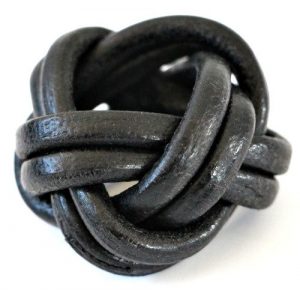
Source: Pinterest
In the early days of the Scout Movement in Great Britain, the Scout scarf used to be tied in a loose knot at the neck and naturally became very creased. However, it was known that the Americans were experimenting by using a ring made from bone, rope or wood to keep their scarves together. Bill Shankley, the one of two permanent camp site employees at Gilwell Park, found out about the American rings and decided to try and go one better.
After various attempts, he finally made a Turks Head knot from thin sewing machine leather which was duly approved by the Camp Chief and, no doubt the Chief Scout.
The American rings were called “Boon Doggles”, most probably because they were made of bone and the name was a skit on “dog bones.” To rhyme with this, Shankley called his creation a ‘woggle’.
An article in The Scout on June 9th, 1923 by Cilcraft called “Wear a scarf woggle” made reference to the idea having become very popular among Scouts who had been quick to imitate the fashion set by the 1st Gilwell Park Scout Troop (that is, Wood Badge holders).
The word “woggle” was used by Baden-Powell in the 14th edition of Scouting for boys, in 1929…..”it (the scarf) may be fastened at the throat by a knot or woggle, which is some form of ring made of cord, metal or bone, or anything you like.” Previous editions refer only to a ring.
Source: Taken from Scouting Magazine, April 1997
#WoodBadge100 #WoodBadgeTraining #WoodBadgeCentenary #scoutssouthafrica




